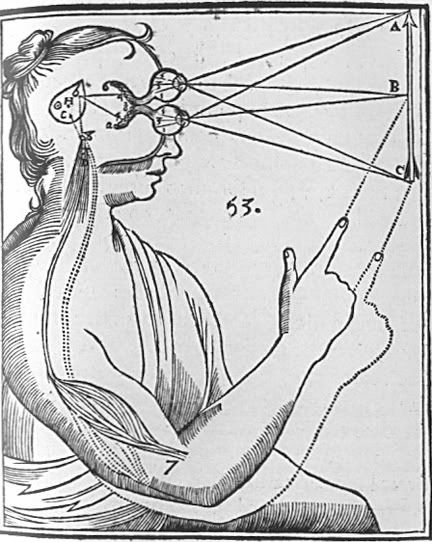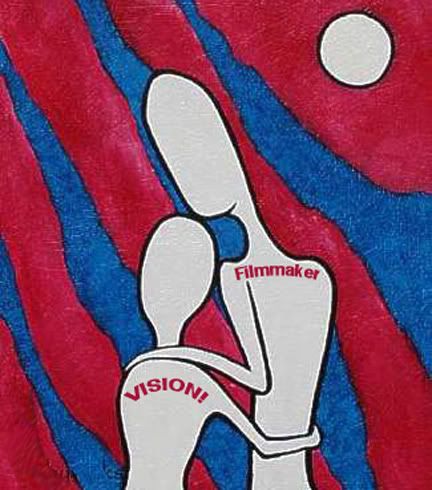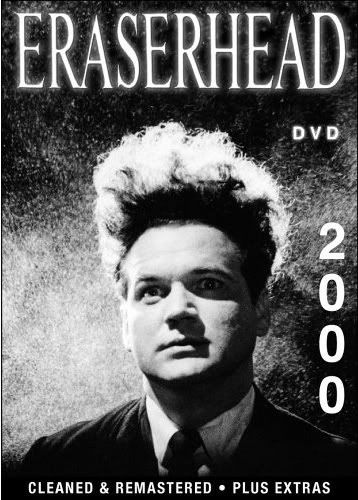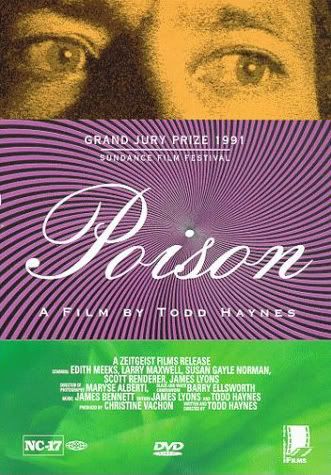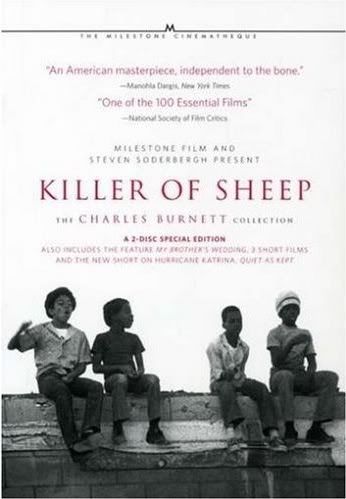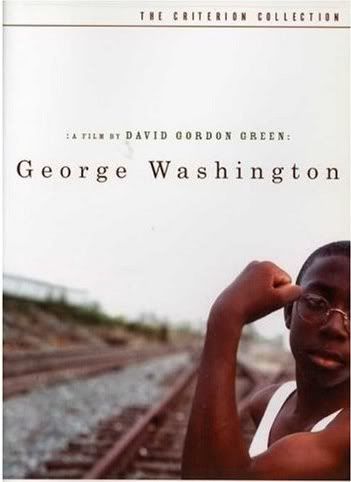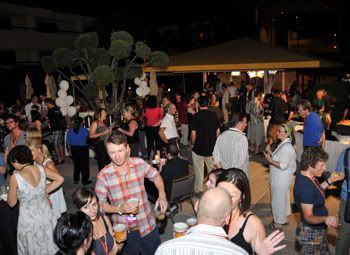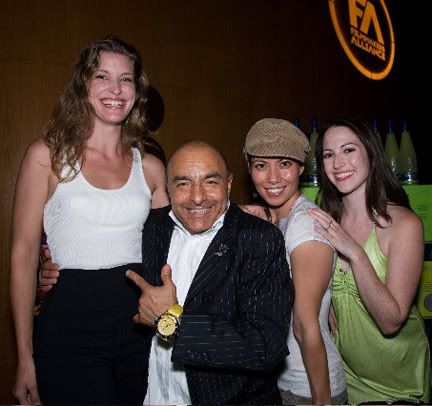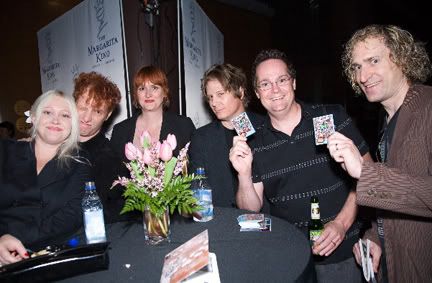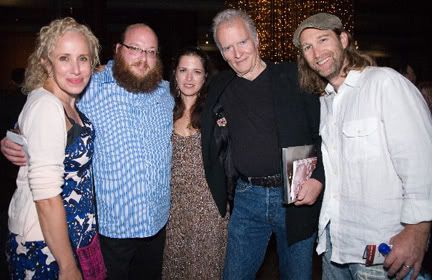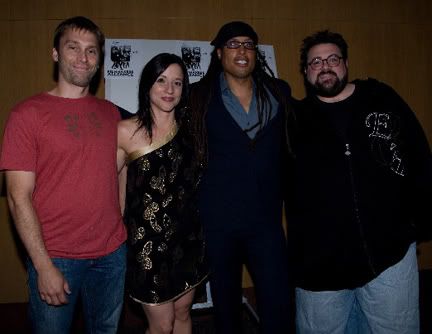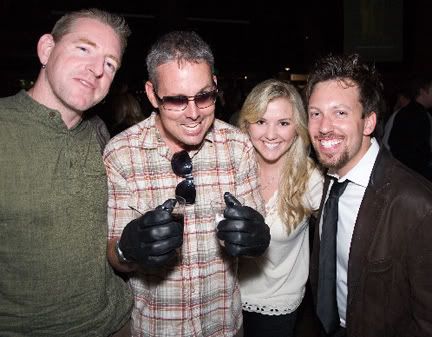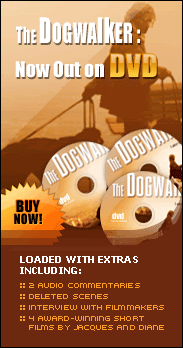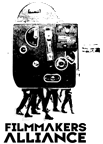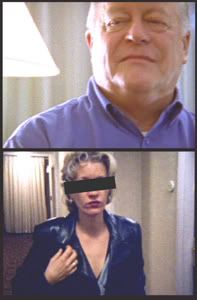
Well, it's over.
IFP's Independent Film Week (IFW) has come and gone here in NYC and I'm already on my JetBlue flight back to L.A. (Burbank, actually). Independent Film Week is IFP's latest incarnation of what was once called the Independent Feature Film Market (IFFM) way back in the day, but was most recently known as IFP Market.
Like the name, the event seems to be ever-evolving, which is a good thing given the radical changes to the way independent film does business. For instance, removing the name "market" makes sense since distributors don't come to buy films, anymore. Why? Because distributors don't buy independent films anymore. At least not often. And rarely are they the type of truly independent films that IFW supports. And in the incredibly rare instance that those true indies are bought, it usually only happens after some triumphant Sundance (or other major festival) screening. But even that is starting to happen less often.
I don't think I've missed a year since 2001 and I first came to this event in the mid 90's. I confess I do miss the crazy, carnival atmosphere of those early years when any film submitted (along with $400 or so) was put in the market and hundreds of filmmakers descended on NY with their VHS copies and promo materials tucked under their arms - along with all sorts of wild strategies for trying to garner attention. But I don't miss all the bad films. Nor the desperation. I do wish they still screened short films, however. And maybe offered some prize for them - or other form of recognition - because of what they contribute to Independent Film. Even more than feature films, short films, as a whole, are a purely independent creative expression. Or they are integral to an independent filmmaker's creative development - often times, both.
But otherwise, the newly-named Independent Film Week accurately and efficiently reflects the new changes, not just to the event, but to independent film as a whole. It is a lean combination of panel discussions, screenings, meetings and parties all of which blend together dynamically to present and celebrate the next wave of truly independent film projects...and filmmakers. Filmmakers don't seem to come here with wild-eyed, hit-it-rich expectations, anymore. They come with a seriousness of intent and purpose, eagerly ferreting out connections and information....and then carrying on at night like a bunch of wild college kids (which some of them are).
 RANDOM NYC SHOT #1 - the moon was freaky behind those clouds.
RANDOM NYC SHOT #1 - the moon was freaky behind those clouds.In essence, it has become a sort of indie film "convention" with the goal being to move your project forward, no matter where in the process it might be. Filmmakers submit their projects for selection whether they be scripts or works-in-progress. For the works-in-progress, they can be narrative or documentary (actually, documentaries are narratives, but the semantics of it all is a whole other discussion). If your script is selected, you get pre-arranged meetings (and any that you can set up on the fly) wtih all kinds of "industry" peeps that might help move forward the process of bringing the script to screen.
My trusted associate and new FA Executive Director, Amanda Sweikow, and I were there as industry peeps so we flew in on Sunday for meetings on Monday and Tuesday. Apparently, some stuff started on Saturday with a panel, a private dinner and an opportunity to meet with our recent VisionFest honoree, Kevin Smith. But we assume those were semi-private affairs since we didn't hear about them. Like a lot of these events, there are always things going on that you never hear about. Kind of understandable since these events can't always afford to accommodate everyone at every function. But not so understandable when I am on of the board of the Emerging Narrative Labs - from which they draw all the work-in-progress narrative films.
 Amanda being a tourist and grabbing a shot of lovely NYC at dusk.
Amanda being a tourist and grabbing a shot of lovely NYC at dusk.So, we came in Sunday after a restless red-eye flight and slept most of the day. I have to take a second, however, to mention how thrilling it is to be in New York City in September. Frankly, it's always thrilling to be in NYC. But it's thrilling and beautiful to be in NYC in September. Of course, I was born in Brooklyn, so it always kinda feels like coming home, too. But, although a bit desanitized these days, NYC is still unmatched for excitement. So, Sunday night we went to the opening night reception, which was brief and rather sedate - held in a big open room at the Fashion Institute on 7th Ave. and 28th St. - where or near all other activities were also held. This is another major change from the Puck Building farther south on Lafayette, where the event was held for several previous years. Actually, the Puck Building better lent itself to chance encounters (in a good way) and impromptu meetings because it had a central "lounge" space that you almost had to pass through and where people always gathered. That kind of hub was missing from this new location.
At the reception, we connected with a bunch of familiar indie film faces - among them
Bob Hawk and
Peter Broderick, as well as with our soon-to-be partner-in-crime for the whole event, Dallas producer
Adam Donaghy whose film "
St. Nick", written and directed by
David Lowery, was included in the event. David hadn't arrived, yet, but I met them both at AFI Dallas when, as jurors, Harry Kellerman and I gave an award to David's beautiful short film, "
A Catalogue of Anticipations".
 RANDOM NYC SHOT #2 - Chinese Hispanic?!
RANDOM NYC SHOT #2 - Chinese Hispanic?!Although there were a couple of unofficial after-parties, we were still tired and I was fighting a flu which had hit me just before I left L.A., so we called it a night. I crashed as soon as I got to our apartment. Which, by the way, I should mention was a cool deal we got on Craigslist. For the cost of a very cheap hotel, we had a good-sized two bedroom apartment on 1st Ave. between 2nd and 3rd Streets (Lower East Side - right in the thick of stuff) with air conditioning, wi-fi and a nice balcony. Of course, it was inside a housing project occupied mostly by elderly Jewish women, but that's part of the deal....and typically New York. It was a clean, safe building and the little old ladies were exceedingly charming. The apartment itself was aesthetically nice, too. The sweet, lovely woman who owns the apartment (or simply rents it) vacated it for us since we are paying her several times more than it costs her to keep it on a daily basis. We have no idea where she went while we were there or even if the rules of the housing project allow her to do this. But it was a win-win for us both.
 We didn't stay in these projects, but you get the idea. Ours had a nice balcony and sweet little old Jewish ladies.
We didn't stay in these projects, but you get the idea. Ours had a nice balcony and sweet little old Jewish ladies.Anyway, the first day of meetings was only a couple of hours and we met with a bunch of filmmakers/writers in 15 minute sessions at a separate but nearby meeting space. All of the filmmakers (and one person who was strictly a writer) were smart and well-spoken. And all of the projects were interesting. We could not meet with all the filmmakers connected to all of the projects in IFW, so we were allowed to pick some of the filmmakers we wanted to meet in advance, which was great. Our goal was to see if and how we could help them and their goal was exactly the same. Three issues were constant in all of our meetings on Monday and Tuesday. First, although the scripts may be fantastic, how would we know if these filmmakers could realize them as films to their fullest creative potential? Many of the filmmakers had done precious little filmmaking and none brought examples of their previous work. What was interesting is that the one guy who had never made a film at all (Benjamin Bates, "Walrus Eating Baloney) brought the most arresting visual presentation - a sort of portfolio of pics, sketchings, writings and perhaps more that had a strong visceral appeal and displayed some real creative ambition.
The second issue, was that many of these filmmakers had never made a feature, but were looking for in excess of 2 million dollars to do their films - some far in excess of that. They did not seem to realize how difficult it is to get 2 million+ dollars, especially in this economic climate, for any film let alone a first feature. That's not to say it couldn't happen with the right script and the right talent attached along with the right connections to money and the tenacity to remain attached as director. But those circumstances all lining up are EXTREMELY rare and thus do not constitute what any reasonable person would consider a realistic plan for making a first feature. But who said filmmakers are ever reasonable?
Lastly, and perhaps most importantly, it was clear none of the projects had thoroughly considered the back end, meaning, the big "D" - distribution. How was their finished film going to make it to market? Films need to be made so that can succeed on one of two levels, preferably both - 1. to make money. 2. to gain exposure. Exposure alone is not preferable, but it can at least build awareness, reputation and prestige that can lead to more lucrative successes down the road with other projects. But, of course, money is always important - even if it is an unapologetic art film - because making money allows us to make more films and to not burn the bridges you've built with investors (who are often also family and friends). You can only make money and/or gain exposure if the film is distributed. And the tired belief that the film will play at Sundance and then get bought for lots of money by a major distribution company is a ludicrous fantasy that filmmakers have been clinging to for far too long. The market has changed too much and filmmakers, like it or not, must take an active role in the film reaching its potential audience (but all of that is for another blog).
 RANDOM NYC SHOT #3 - Hells Angel's NYC Chapter on E. 3rd St.
RANDOM NYC SHOT #3 - Hells Angel's NYC Chapter on E. 3rd St.The other important point about distribution, however, is that it forces you to think about the film's value in the marketplace. Who is the audience and how well can the film perform with them? Can it break-out from that? Thinking about this should motivate filmmakers to work back and think about their budgets so that they are not so ridiculously out-of-line with where they are as first-time feature filmmakers. You want to do an art film? I hope so. But realize it will have a limited audience and therefore make limited money. You want to make a more mainstream film, but with no recognizable talent? Same situation. And this will be a first-feature film with a few rookie mistakes no matter how brilliant you are. Take this all into account and budget realistically.
But the bottom line is that we came away excited about the ideas, energy and talent of the filmmakers we met and look forward to reading their full scripts. At the end of the first day of meetings, we rushed off to the conference, which is the full day panel discussions that went on every day of IFW. It was the first day of the conference for us....and our last. As usual, the panel discussions were the weakest part of the whole event. Now, I'm not singling out IFP for this. Panels and seminars are notoriously and ubiquitously bad at nearly all filmmaking events - festivals, conferences, expos, etc. - from Sundance on down. Which always suprises us. Especially at this event because the panel topics/descriptions are exciting, the panelists are accomplished and articulate, the moderators are smart. But, somehow, they rarely offer new, clear or specific information and often spotlight "success" stories that have very little if any relevance to the journey of all the other filmmakers in attendance. The panels we went to were part of tech day - with all the panels addressing the relationship between the film industry and new technology. But after 3 panels, we realized we either weren't going to hear anything we didn't already know or lots of what we didn't, and didn't want to, know. Lance Weiler was the most interesting speaker on all of the tech panels, but he is almost too tech savvy, using lingo that went over the heads of many of the filmmakers. And still, the practical info was not clear and specific.
Later that night, we went to a restaurant owned by friends of an FA member,
Aqua Grill, and had one of the greatest meals either Amanda or I had in a long while. And I had perhaps the single best martini I've ever had. It put us both in the perfect mood for a screening of IFP-supported indie project, "
Medicine for Melancholy" (to be commented on in an upcoming blog) and then to another party - this time at a club, where we hooked up with familiar faces, met a few more and continued to drink waaay too much - especially for someone battling the flu.
Tuesday was more meetings with filmmakers and, at night, we went to the always-anticipated Florida Film commission Sushi party. All you can eat sushi and all you can drink saki and beer. For filmmakers. It's always an awesome party and we connected strongly with a lot of filmmakers....which carried on into an after-party at a cool bar on the south side of Houston and finishing with a karaoke bar on Bowery. Adam was our MC through it all and seemed to know everything that was going on. Again, more bonding, but also more drinking. We don't seem to learn.
 RANDOM NYC SHOT #4 - Young babes out for the night and displaying the manual they use to guide them through what they think they're supposed to do....
RANDOM NYC SHOT #4 - Young babes out for the night and displaying the manual they use to guide them through what they think they're supposed to do....Finally, Wednesday, we swore off drinking and enjoyed the annual Feast of San Gennaro - a very old traditional ritual that has morphed into an Italian-themed street fair in Little Italy, which was just a few blocks away from our housing project. At night, we went to the Rooftop Screenings of the films in the event.
Rooftop Films is an organization that runs a fantastic screening/event series run by the smart, charismatic Mark Elijah Rosenberg. As the name suggests, they often screen dramatically on rooftops, but not exclusively. Nonetheless, they are always in interesting locations. And there is always live music beforehand and a party afterward. The best thing about it, however, is the quality of programming - always top notch and usually with the filmmaker or filmmakers in attendance. Anyway, although IFW was screening clips of all of its included films as a regular part of the events, Rooftop held a special outdoor screening of clips from all of the included films. The screenings are held so that industry types (and anyone else) can get a feel for the films and step up with whatever support the films need to get finished and/or out in the world. It was great to see al of the films, back-to-back, and get a real feel for the breadth and quality of the included films. Amanda and I were most impressed with our buddies' film "
St. Nick". Although we are admittedly partial, the film is definitely more of an FA aesthetic ideal than some of the other narrative offerings on display. As a whole, all of the films were impressive and had something noteworthy about them, but we still felt many of the narrative films suffered a bit from indie-itis (definition reserved for a future blog) and the documentaries seemed much stronger. But that is often the case at festivals, too.
 The Feast of San Gennaro
The Feast of San Gennaro The Independent Film Week Screening at Rooftop Films and (below) the Blogger's self-portrait watching those screenings...
The Independent Film Week Screening at Rooftop Films and (below) the Blogger's self-portrait watching those screenings...

On Thursday, which is really the celebratory closing of the event (even though the panels continue through Saturday), there was the Awards brunch at Chinatown Brasserie, when IFP brings together all of the key IFW board members and other contributors as well as selected filmmakers whose projects are singled out with impressive cash and in-kind grants. It was really great. It's always inspiring to see so many old school NY indie-film luminaries in one room, it's great to see all the filmmakers receive such awesome support and it's amazing to feel such a strong sense of community and shared purpose.The food was good, too. I got hammered by a whole new level of flu and was barely able to stagger to the brunch, then sat through it all like a zombie. But I was happy to be there. Our ego was gratified to see that so many of the filmmakers we'd requested to meet with were finalists in the Screenwriting category. And, guess what? Benjamin Bates, the filmmaker who'd never made a film, but impressed us with his visual homework, won the Screenwriting Award for "
Walrus Eating Baloney". Here were some other winners:
Joseph Cashiola received IFP's inaugural $50,000 Independent Filmmaker Lab Finishing Grant for his feature directorial debut, the drama "
A Thing as Big as the Ocean."
Dia Sokol's feature debut,"
Sorry, Thanks." won the $10,000 Adrienne Shelly Director's Grant.
"
The Promise of Freedom," by Beth Murphy won the $10,000 Fledgling Fund Award for Socially Conscious Documentaries.
Eight other filmmakers won Panasonic Digital Filmmaking Grants, but sadly, I can't remember who they all were.
 The Awards Brunch with Bob Hawk right at the center of it where he belongs.
The Awards Brunch with Bob Hawk right at the center of it where he belongs.Of course, there was more partying on Thursday night, most of which I had to bow out of because of the flu. Otherwise, that was about it for us and Independent Film Week 2008. However, I must add that I've so far neglected to mention a thing called "No Borders". No Borders is that part of Independent Film Week that deals with international productions and co-productions. Similar to other parts of the event, the event tries to move these productions forward through a series of meetings, introductions and parties. But it is almost like a separate, but parallel event because all of the No Borders events are restricted to No Borders projects and participants only - of which I am not a part. So, unfortunately, I have no idea what was a-goin' on over there. Good things, I would imagine, as the No Borders projects are rumored to be slightly bigger projects that are always top-notch.
In the end - I had, as always - a great time, came across some great films and filmmakers, and connected/re-connected with some meaningful indie film community peeps. Here are some of the conclusions I've drawn from this year's event - some of which I've repeated to others ad nauseum from past events:
Independent Film Week, by any name, is extremely valuable. Despite my minor criticisms, I really love this event and think it is a really important independent film matrix....and I do mean TRUE independent film. It really supports emerging films and filmmakers and bridges artistic, technological and business concerns nicely. And it helps keep the fires burning for a real independent film community. Can it be even more dynamic? Certainly. But as is, it works pretty damn well and there's really not another event like it.
We need something like it on the West Coast. For all the reasons just mentioned, we need to do this twice a year and bring some of this energy to L.A. so that what is unique about L.A. can flavor the event and, perhaps more importantly, what is great about the event can flavor L.A.
NYC has a much more vibrant, aesthetically ambitious indie film community. I hate to admit it, but it's true. Please, LA filmmakers, prove me wrong. But the NYC community just seems to be more tight-knit and there are simply waaay more filmmakers and screening series in NY that suppport real cinematic ambition. Can we have that in L.A.? We keep trying....and will keep on trying.....
Indie film as a whole is changing rapidly in some new, exciting ways...and same as it ever was in other ways. New technologies seem to be cropping up daily to support both production and exhibition of indie film and we'd be smart to keep ourselves informed of them. More than that, actually....to master them. But in the end, it is still about creating great cinema (or content as some folks like to call it, now). Nothing new matters if the old stuff isn't taken care of.
There is nothing like NYC in Fall. I walked all over the damn city in some of the best weather imaginable. I'm still swooning....
 RANDOM NYC SHOT #5 - Central Park In September.
RANDOM NYC SHOT #5 - Central Park In September.
